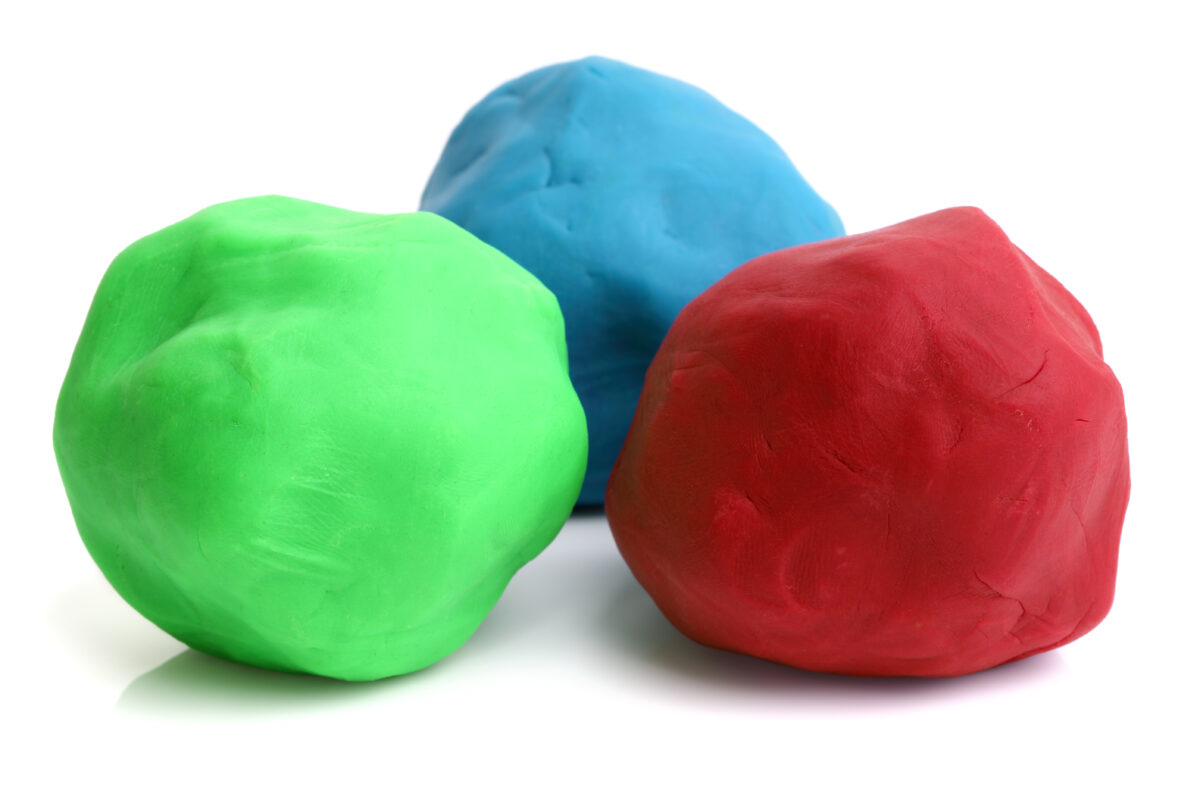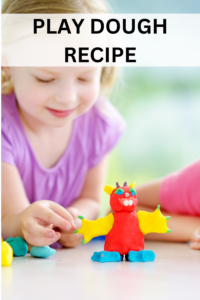
Here it is! The easiest, simple homemade play dough recipe made with safe and edible ingredients.
Now, you can enjoy this amazing sensory activity with your little ones who might enjoy exploring So, gather your ingredients and get ready for a play-dough experience that will blow your mind.,

It may seem like all fin and games but play dough is so much more than just a toy. It has incredible sensory and other developmental benefits to it.
In this post, we will not only discuss all of the amazing benefits of playing with play dough, but we’ll also give you the simplest homemade play dough recipe made from ingredients you’re likely to already have in your kitchen.
Hi! My name is Marra and I’m a mama and a pediatric occupational therapist who has years of experience working with children with autism and helping their parents navigate the ups and downs of child development.
I loved being a support person for parents learning about autism, sensory processing, and their child’s individual needs. I worked with many children on the development of their sensory processing skills.
I would often recommend to families different sensory activities to strengthen their skills and the families I worked with would love this recipe because it is easy and safe. I hope you will to.
This post is all about the incredible developmental benefits of playing with play dough and the easiest homemade play dough recipe for you to start making and playing with play dough at home today.

What is sensory processing and why is our sense of touch so important?
In order to learn more about the amazing benefits play dough can have, we first need to take a closer look at what sensory processing is and why it is important to consider for every child.
Sensory processing is our ability to take in all of the information from the environment through our 8 sensory systems, filter out what we need to pay attention to, what we need to ignore, try to understand, and then choose an appropriate response to the situation.
In case you were wondering, or thought that might of been a typo… Yes! We do have 8 sensory systems. We have the 5 sensory systems we all are more familiar with: what we see, hear, taste, touch, and smell.
We also have 3 additional sensory systems that are less well known: vestibular, proprioception, and interoception.
Our vestibular sense is our sense of movement and our response to gravity. It is how we stay balanced when we move.
Proprioception is our sense of deep pressure and body awareness. Interoception is the sense of how our body is feeling, I’m hungry, tired, hot, sick.
If you would like to learn more about sensory processing and our 8 sensory systems check out the post linked below.

One of the most import sensory systems we have is the sense of touch. Touch is our largest sensory system as it is housed in our skin, our largest organ.
Our sense of touch is very much connected to our sense of security and safety. This is why the touch of a hand or a hug from a loved one is so comforting.
It’s also why our babies and littles want to be held, especially when they are uncertain and scared. This is why skin to skin contact is so important for babies.
On the flip side of this, the sense of touch can be linked to anxiety or fear. When we touch something we don’t like it can cause anxiety. For our littles this can link to food and picky eating.
I mention this because it is so important to respect our little one’s bodies and not force or pressure them to touch or play with anything they are not comfortable with. And same goes for eating.
What we can do is create a safe place for our littles where they can trust us and provide them with opportunities to explore different sensory experiences without any pressure. This homemade play dough recipe is a great opportunity to do just that.

THE AMAZING DEVELOPMENTAL BENEFITS OF PLAY DOUGH
Improving sensory processing skills is one of the amazing benefits that this simple homemade play dough recipe can have.
Every time a child explores a new sensory experience such as a new texture, they are learning how to process new sensory information and strengthen their sensory processing skills.
When we think of the importance of sensory activities, we most often think 0f the importance of them for children with with autism, sensory processing disorder, or sensory processing challenges.
However, sensory activities are important for every child, those with both typical and atypical developmental skills.
On average, children don’t fully develop their sensory skills until the age of 7 so participating in sensory activities such as playing with play dough is important for every child.
What I love the most about this homemade play dough recipe is that it os made from simple, nontoxic ingredients that you most likely will already have in your kitchen
So, if you have a toddler, or an older child who likes to explore things with their mouth and puts things in their mouth then this is the play dough recipe for you. They can play have all the fun they want with this play-dough and you’ll have nothing to worry about.
Play dough has additional benefits to it as well as strengthening sensory processing skills it is also great for a child’s fine motor development. Playing with the play dough will strengthen all of the little muscles in your child’s hands.
They will need all of these little muscles to participate in fine motor activities such as coloring, writing, and completing fasteners as well as all of the other daily activities. Playing with play dough is a great way to increase your child’s hand strength to help them with these skills later on.
If you would like to learn more about toys and different activities that promote fine motor development, check out the post below.

Playing with play dough is also an amazing way to for your child to develop their creative and artistic side. They can build different characters of a house. They can engage in pretend play with the characters or the animals that they build.
Open-ended play that leads to pretend play or creative plat encourages a child’s development of their imagination as well problem solving skills and social skills. Play dough has so much to offer. So what’s stopping you. Let’s dive into this amazing homemade play dough recipe.
Homemade Play Dough Recipe
Ingredients
- 4 cups flour
- 1 1/2 cups warn water
- 1 1/2 cups salt
- 3 tbsp oil
- food coloring (optional)
- In a large bowl combine the flour, salt, and 0il and mix together
- Add 1 cup of water and the food coloring and continue to mix well.
- Slowly add more water until dough starts to form.
- Once the dough forms, kneed it with your hands adding more water until it is the right consistency

Ye! It is that simple! You’ll have the best play dough ready for your liitle onw to play with in minutes with this homemade play dough recipe. It’s that easy.
For an added sensory bonus, you could have your little one join in and help you make the play dough for even more fun.
Feeling accomplished with the task of helping to make the play dough can leave them with a boost to their self-confidence.
